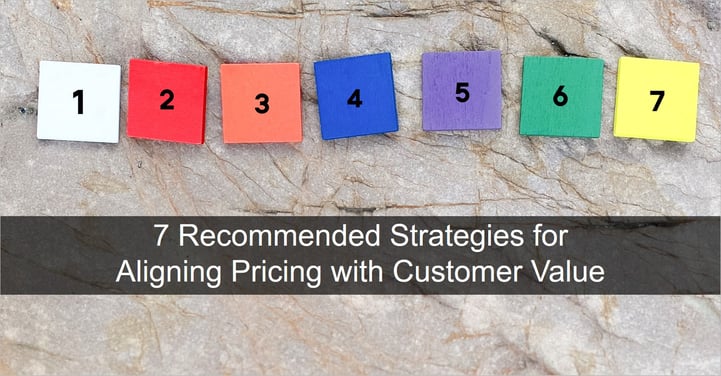
Value pricing is a customer-centric strategy that sets prices based on the estimated economic value of a product or service rather than purely on market benchmarks or internal costs. When executed correctly, this powerful approach can increase profits and customer satisfaction. The challenge is aligning price with value delivered.
Return on Investment (ROI) is a common metric for assessing the efficiency of an investment by comparing its gain to its cost. Often, when estimating the ROI for a solution, an exceptionally high customer ROI could be the result.
There are two primary reasons why this could occur:
- The offering is significantly underpriced and its price may not be aligned with the actual value provided.
- The price is limited based on the price and value delivered by the customer’s next best alternative (a competitive offering). It is important to understand the difference. If you are confident that your price is aligned with the value delivered, then you should be ready to defend the high ROI.
Alternatively, if your price isn’t based on value, you are likely underpriced. There are a variety of underlying reasons for underpricing, including a lack of confidence in the offering, fear of losing to the competition, or simply not understanding the full extent of the value delivered. Underpricing not only leaves money on the table, but can inadvertently leave customers thinking that the offering is not valuable.
Top 7 Strategies to Align Pricing with Value
To ensure that your pricing reflects the true value of your offerings, consider taking the following steps:
- Conduct Voice of the Customer (VoC)
Understand your customers' needs and the value they receive from the capabilities enabled by the offering. This will help you identify which aspects of your product or service are most valuable to them. - Analyze Competitor Pricing
While value pricing is not primarily about competition, the maximum price you can charge can be impacted by the price of your competition. Knowing how competitors price similar offerings can provide a benchmark and help you avoid under (or over) pricing. Remember though, that you don’t need to match the competitor’s price. Your maximum price is simply limited by the value your offering delivers over the competitor’s value delivered. - Evaluate Your Value Proposition
Clearly define what makes your product or service unique and why those attributes are valuable to customers. This will help you justify a price that is commensurate with the value delivered. - Communicate Value Effectively
Ensure that your marketing and sales efforts effectively communicate your value proposition to your customers. If they understand the value, they are better able to justify the investment at a higher price point. - Monitor Customer Feedback
Regularly seek and analyze customer feedback to gauge their ongoing perception of value and satisfaction. This can provide insights into whether your pricing strategy is on target. - Adjust Pricing Strategically
Consider strategic price adjustments if your ROI calculations indicate that you are underpricing. However, do so thoughtfully to avoid overpricing based on the customer’s next best alternative. - Continuously Reassess
Value pricing is not a set-it-and-forget-it strategy. Continuously reassess your pricing as customer needs, the competitive landscape, and your offering changes.
Further Risks of High Customer ROI
While a high ROI for customers will generally lead to more sales, it can also have unintended consequences for your business. For example, it may lead to situations where customers expect the same high ROI indefinitely, making it difficult to raise prices later.
Additionally, it can lead to internal complacency that allows a competitor’s offering to start delivering even more value. You could then find yourself in a situation where your offering is actually overpriced, even when delivering a high ROI.
Conclusion
Value pricing is a nuanced strategy that requires a deep understanding of your customers and the value you provide. If your ROI calculations reveal that customers are getting an exceptionally high return, it could be a sign that you are not fully capturing the value you deliver.
By reassessing your pricing strategy and ensuring it aligns with the value received by customers, you can optimize your profitability while maintaining customer satisfaction. Remember, the goal of value pricing is not just to sell, but to sell at a price that reflects the true worth of your offerings.
How Can ROI Selling Help?
Here’s how ROI Selling can help you thrive in tough times.
- Consulting services to help you develop or refine your value pricing
- ROI tools to justify your pricing and close more deals
- Value tools to prioritize and plan your product roadmap and link it to the consultation page

Resources
Connect with Darrin Fleming on LinkedIn.
Join the Value Selling for B2B Marketing and Sales Leaders LinkedIn Group.
Visit the ROI Selling Resource Center.








